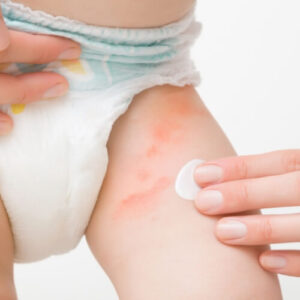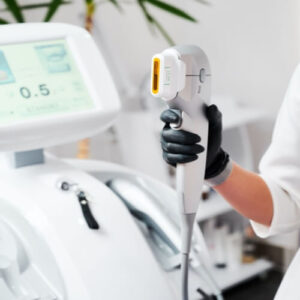Retinal tears: symptoms and treatment
Symptoms of a retinal tear
Shutterstock
Diseases that damage the eye are considered a special priority, due to their rapid effect on vision, especially cases that damage the retina, such as retinal tears.
What is this condition and how is it treated?
What is a retinal tear?
The retinal layer in the eye is the thin inner layer covering the eyeball, which is responsible for vision, as its function is to receive the imagination and send it to the brain.
The light rays are received through special sensory cells in the retina, which convert these rays in the form of stimulation through the optic nerve, which in turn transmits it to a certain area of the brain, and here interprets these alerts and we see the full picture.
Thus, if something goes wrong in the retina, the image will not be received, will not be sent to the brain, and vision will not occur.
A case of retinal tear, it can be described as a hole or crack in the retina for some reason, and through this hole an amount of fluid may enter leading to a case of retinal detachment, a dangerous condition that threatens the sense of sight.
Therefore, a retinal tear is not a disease in itself, but a condition affecting the retina that may cause another disease.
Symptoms of a retinal tear
It might be conceivable that a tear in the retina would cause pain in the eye, but the opposite is true, and the case of the tear actually, even if it develops into a separation, remains painless.
The onset of symptoms depends on the degree of perforation and separation that has occurred. Symptoms include:
- A sudden appearance of strange shapes that the patient sees when looking at a very bright and white surface, and this condition is called flying flies. Which can take many forms: clouds, masses or spider webs that swim in the field of vision, move with eye movement and are the first thing the patient notices.
- A sensation of sparks or sparks in the eye indicating the development of the condition and the onset of retinal tension.
- Vision may become blurred (blurring) when bleeding and blood infiltration into the vitreous occurs.
- If retinal detachment develops, a black curtain will appear within the field of vision.
The appearance of flying flies often prompts the patient to visit the doctor, which can have other reasons besides the tear, but when it is accompanied by sparks and other symptoms, the doctor will make the doctor suspect a tear and retinal detachment.
Causes retinal tears
There are several reasons for tearing the retina, but one should pay attention to the most important and famous reason, which is the detachment of the posterior vitreous, a condition that occurs in the elderly, especially over 60.
The vitreous here is the gelatinous vitreous that fills the eyeball and is in direct contact with the retina.
With age, its gelatinous structure changes to a semi-liquid structure, and thus a separation may occur between the vitreous capsule and the adjacent retinal layer, and this separation may be accompanied by tears in the retina and light bleeding.
Retinal tears do not only occur in the elderly, they can occur at any age, and the causes can include:
- Myopia (nearsightedness) in an advanced and untreated state
- Cataract or glaucoma (glaucoma)
- Eye trauma or surgery
- Glaucoma medications, such as the mydriatic pilocarpine
- Previous retinal detachment
- Injuries of a family member with retinal detachment
Diagnosis of retinal tear
An immediate visit to the ophthalmologist is necessary if the patient notices any of the symptoms related to a retinal tear, and the doctor’s role is to make a quick diagnosis in order to receive the appropriate treatment.
After taking the medical history and clinical examination, there are several additional tests that can confirm the diagnosis, as follows:
1- Ophthalmoscopy
This test is done using an ophthalmoscope, which allows the doctor to check the internal structure of the eye, which includes the retina, and from there he can look for signs of a tear, if any.
2- Ultrasound of the eye
This is one of the common procedures for diagnosing a retinal tear. These waves give an internal image of the retina, which allows for an accurate diagnosis of the condition.
3- Amsler grid test
It is a grid of intersecting vertical and horizontal lines, giving small squares. This grid can be a tool for vision testing and uncovering some problems that affect the retina.
Treatment of retinal tears
Treating a retinal tear in time and preventing it from progressing to detachment is critical, in order to prevent the patient from losing his sight irreversibly.
The decision on the treatment depends on the location and size of the tear, as some cases are mild and not dangerous and only need observation. The body can repair the place of the tear through an inflammatory process, which leaves scars that close the hole and prevent separation b. the retina
As for other cases, a therapeutic intervention is required that includes several options, and the doctor will act according to what is best for the patient. Among the most important ways are:
- Laser photocoagulation: It is usually used for small tears, and the principle is based on causing burns around the place of the tear, and these burns turn into scars with the same inflammatory mechanism that the body uses, which closes the tears and prevents the entry of fluids that cause the detachment of the retina.
- Retinal cryotherapy: It is widely used, but it is considered a second option, as the doctor uses it in case of an obstacle to laser coagulation, such as bleeding. This option relies on cooling rather than thermal coagulation, but the treatment mechanism is the same and relies on scarring to close the tear.
- Silicone injection: The doctor may choose to inject silicone instead of the vitreous, to put pressure on the retina and prevent it from separating.
Often after surgery, the doctor prescribes a set of anti-edema drops and additional antibiotics that prevent infection at the surgical site, in addition to an eye patch that is placed to prevent exposure to any external factor. The patient may suffer from vision problems and redness in the eye, which is normal after the operation.
Tips after retinal tear surgery
The recovery period of the retina after surgical repair ranges from one to four weeks. During this period, the retina is in a state of restoration, so the eye needs special care.
There are several recommendations to follow, namely:
- Avoid quick and sudden movements of the head, and stay away from work that requires physical effort.
- It is better to take a vacation from work that ranges from two to four weeks.
- Put a cold pack on the eye for 20 minutes, in order to relieve the swelling.
- Avoid getting soap in your eyes, when washing your face or showering.
- It is better to wear sunglasses during the day.
- Avoid driving during this period, especially if vision is not completely clear.
- Go to the doctor according to the agreed time, and inform him immediately if new symptoms develop.
- There are no food recommendations, but it is best to avoid high-fat meals, especially if the stomach is upset.





